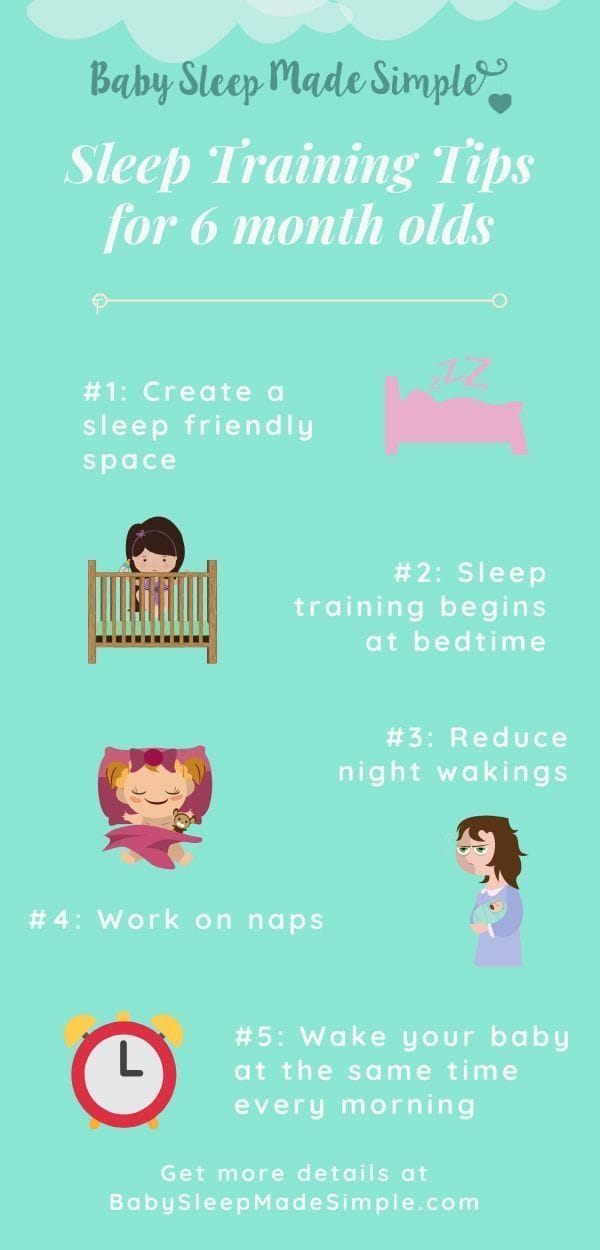Sweet Dreams Await: Sleep Training Your 6-Month-Old
Hello, wonderful parents! If you’re reading this, chances are you’re in the magical (yet sometimes exhausting) journey of parenting a beautiful 6-month-old baby. Isn’t it amazing how those tiny feet and twinkling eyes can bring so much joy and yet, at times, make you wish for a few more hours of uninterrupted sleep? Well, worry no more, dear nurturers of the next generation, because we’re here to navigate the restful waters of sleep training your 6-month-old.
Understanding Sleep Training
Before diving into the waves of sleep training, let’s understand what it means. Sleep training is essentially a process that helps your baby learn to fall asleep independently and stay asleep throughout the night. It’s a holy grail for tired parents, a beacon of hope for uninterrupted nights, and most importantly, it’s about creating healthy sleep habits for your little cherub.
Is Your Baby Ready for Sleep Training?
At 6 months old, most babies are ready for sleep training. They have a more predictable sleep pattern and have developed the ability to self-soothe. This is a sweet spot as it’s before separation anxiety kicks in, which can sometimes make sleep training a tad more challenging. So, let’s give a round of applause for perfect timing!
Creating the Perfect Sleep Environment
First things first, let’s set the stage for dreamland success. A quiet, dimly-lit room is where your baby’s sleep training journey begins. Ensure that the crib or sleep area is safe and free from distractions. A white noise machine can be a magical tool to muffle any disruptions and calm your baby with a soothing, static sound. Oh, and don’t forget the power of a consistent bedtime routine to signal to your little one that it’s time to wind down.
The Methods to the Madness
Now to the meat of the matter—choosing your sleep training approach. There are several methods out there, from the gentle ‘no-tears’ strategies to the more structured ‘cry-it-out’ (CIO) techniques. Whatever path you choose, remember it’s about finding what works best for your family’s needs and your baby’s temperament.
- Ferber Method: Also known as graduated extinction, this involves putting your baby to bed when they’re sleepy but awake and gradually increasing the time you wait before responding to their cries.
- Chair Method: Sit in a chair near your baby’s crib and slowly move it farther away over the course of several nights, offering fewer comforting interventions each time.
- Pick Up/Put Down Method: You comfort your baby with cuddles each time they cry but put them down as soon as they calm.
Consistency Is Key
No matter which method you choose, consistency is the golden thread that ties your success in sleep training. Babies thrive on routine, and maintaining a consistent approach will help your little one learn what to expect at bedtime.
Handling Setbacks Like a Pro
It’s not all going to be nighttime serenades and peaceful zzz’s right away, let’s be real. There will be setbacks. Maybe a pesky tooth decides to make an entrance, or a cold shows up uninvited. The key is to handle these hiccups with grace, knowing that they’re just temporary clouds on your sleep training horizon.
Ready to embark on this sleep training adventure? Stay tuned! We’ll be right here to guide you every step of the way. Now, let’s grab our sleep training capes and get ready to transform those restless nights into peaceful slumbers. Sweet dreams are on the horizon, dear parents!

Five Essential Tips for Preparing for Sleep Training
Embarking on sleep training your 6-month-old is akin to preparing for a gentle journey into dreamland. Here’s a constellation of five twinkling tips to make sure you’re all set for takeoff:
- Establish a Bedtime Routine: Like a soothing lullaby, a bedtime routine signals to your baby that it’s time to wind down. Bath time, a cuddly story, and gentle massages are the verses to your pre-sleep serenade. Starting this routine about 30 minutes before bedtime will prepare your little one for the sandman’s arrival.
- Pay Attention to Sleep Cues: Yawning, rubbing eyes, and fussiness are all sleep signals. Learning to read these cues like a treasured storybook can help you put your baby down at the optimal time, avoiding the overtiredness that often makes falling asleep harder.
- Daytime Naps Matter: Naptime is not just a break for you—it’s an essential chapter in your baby’s sleep story. A well-rested baby during the day is more likely to sleep better at night. So, keep to a nap schedule that complements your baby’s natural rhythms.
- Environment is Everything: The setting for your baby’s slumber should be dark (think room-darkening shades), cool (around 68-72 degrees Fahrenheit), and quiet. This sensory lullaby of an environment will help your baby differentiate between day and night.
- Feed Well: Like a tummy full of warm milk, a well-fed baby is often a happy, sleepier baby. Ensuring your little one is well-nourished throughout the day can pave the way for longer stretches of sleep at night.
Navigating Night Wakings
As you sally forth on this slumberous quest, you may encounter the Night Wakings. These are moments when your baby briefly stirs. The key to success here is to pause before rushing in. Often, your baby may resettle without help. If intervention is necessary, do so with minimal disruption to keep the sleep association strong.
Tracking Progress with Sleep Logs
Maintaining a sleep log can be as enlightening as the morning sun. It helps you identify patterns, understand your baby’s sleep needs, and chart progress over time. Include details like bedtime, wake times, duration of nighttime awakenings, and notes on naps to keep the diary comprehensive.
The Partnership of Parental Unity
A symphony of parental harmony is foundational for successful sleep training. Communicate with your partner and ensure you’re both on the same page with the approach you’re using. This unity creates a consistent cocoon for your baby.
Remember, every baby’s sleep story is unique, and yours is being written one restful page at a time. With preparation, patience, and a sprinkle of persistence, you and your 6-month-old will soon be basking in the moonlit glow of restful nights. Sweet dreams and pleasant slumbers await!
See more great Things to Do with Kids in New Zealand here. For more information see here
Disclaimer
The articles available via our website provide general information only and we strongly urge readers to exercise caution and conduct their own thorough research and fact-checking. The information presented should not be taken as absolute truth, and, to the maximum extent permitted by law, we will not be held liable for any inaccuracies or errors in the content. It is essential for individuals to independently verify and validate the information before making any decisions or taking any actions based on the articles.




